Our Intercultural Immersion Editor, Stephane Alexandre, recently was a guest with G Adventures for 16 days to Costa Rica! This is one of her trip reports – and on my favorite subject, coffee. See details about her adventures at Manuel Antonio Park (and snakes, and monkeys), and whitewater rafting here. Considering a G Adventures trip? Consider using the affiliate links in this article, as they help support this site at no extra cost to you.
I survived four years of a small liberal arts college without any coffee. Tea, hot chocolate, and naps carried me through midterms and finals. When I heard there was a coffee tour in our Costa Rica adventure, I was excited to learn more... and hopeful that I would emerge a coffee lover!

Prior to the tour, we spent two relaxing days in Sarapiqui. We stayed at a beautiful lodge with a balcony perched over a serene river and toucans flying over our heads. Without wifi or a connection to the outside world, it was a vacation within a vacation. We took a bus, then a tractor, to make it to what felt like the end of the world. Everything stood still at the lodge. I had no deadlines to adhere to, no impending social doom that needed my undivided attention, and the turbulent world of social media was fading. At first, I was worried. “What would I even do without my phone?”
It turns out, one can achieve a lot without one’s phone constantly beeping.
The first day, we unpacked our bags and went on a tour of the rainforest... and RAINforest, it was! We slipped and fell in the mud, got back up, burst into laughter, and eventually fell again. We tried our best at avoiding the leafcutter ants, but those little tyrants are EVERYWHERE. We marveled at herculean trees and traced their towering branches all the way to their interwoven roots.
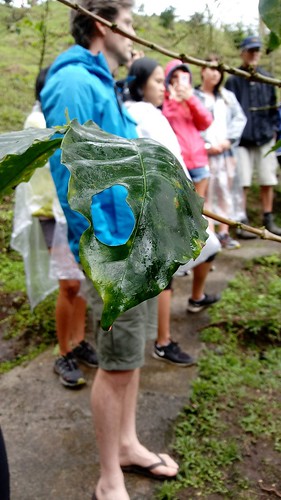
“Ahh, nature. I’ve missed you,” whispered this city girl.
We came back to the lodge for a delicious cooking class on Costa Rican empanadas! I devoured my own empanada and tried to bribe someone else for theirs, to no avail. In two days, I finished a book, journaled for three straight hours, dipped my toes in the river, and stood my ground against invading leafcutter ants.
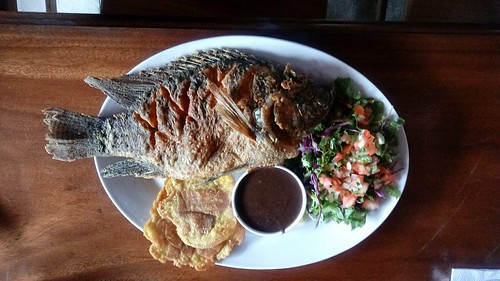
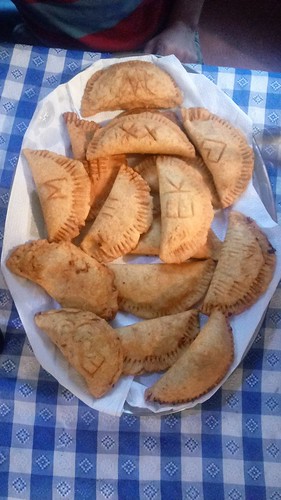
Soon, we were setting out on the path to medium roasted coffee and I was grateful for two days of peaceful bliss.
Our guide, Katherine, greeted us at the entrance of the Mi Cafecito office. We formed a small semi-circle around her as our bus boisterously parked in the background. A light rain started to drizzle above our heads, but everyone was determined to learn (er, drink) about coffee!
This was it -- where the magic is made: planted, harvested, roasted, and shipped!
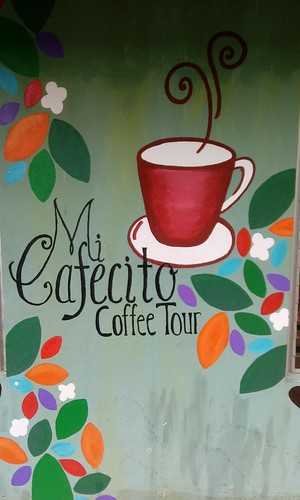
Mi Cafecito is a fair trade coffee plantation that works with the Planeterra Foundation to bring travellers to Sarapiqui. After an earthquake in the San Miguel de Sarapiqui in 2009, there was a great need for jobs and resources -- but with blocked roads and decayed infrastructure, it became difficult for coffee farmers to continue to earn money. Soon, Planeterra began working with the cooperative to develop and maintain the tours.
Planeterra, founded by G-Adventure founder Bruce Poon Tip, was established in 2003 and contributes to projects that enable women empowerment, wildlife conservation, and youth development. Planeterra and G Adventures work in parallel to connect with communities. Travelers book their adventures through G Adventures, knowing that in the itinerary, they will visit a Planeterra supported site. Planeterra, meanwhile, partners with local and small businesses in communities where those travelers visit to learn more about the culture and traditions of the country. It's a win/win for everyone.
Mi Cafecito is one of the "G Adventures for Good” social enterprise projects. G Adventures is committed to raising funds and kickstarting 50 new such social enterprises in 5 years, bringing their intended global total to 75 by 2020. 100% of the money raised is directly injected into communities to spur development, since G Adventures pays for all overhead costs. Click here to read more about G Adventures' 50 in 5 project.
The tour began!
History of Coffee in Costa Rica
Coffee was introduced to Costa Rica by a European prince in 1816. In 4 short years, Costa Rica was exporting coffee to Panama. By the mid 1800s, coffee was being transported by ox from northern Costa Rica to the capital, San Jose. During this long commute, some men would make coffee liqueur (a delicious, delicious liability) in their ox-carriage and become so inebriated that they would not notice their oxen going off course. This was a shameful act! Soon, the community started stationing men at various checkpoints to just stand and shake their heads at the drivers who had to get back on the right route to San Jose.
With drunk driving checkpoints implemented, Costa Rica entered the 20th century with a booming economy due to its coffee exportation. Coffee production soon became a family business as the agriculture in CR increased. Farmers started to hire young people to plant and harvest coffee in their plantations.
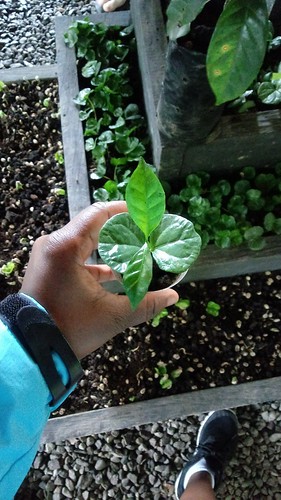
Harvesting Process
The harvest season is from June to December, and the farmers work from 6AM to 6PM every day. The first step for the farmers is to shake the coffee trees to rid of beetles, spiders, and snakes.
The coffee plant has many enemies. The roja fungus puts holes in the coffee leaves and destroy the plant to its root. Since Mi Cafecito is an organic plantation, each farmer is armed with vinegar to spray the plants instead of pesticides. Beetles, spiders, and snakes all eat the bean - and in extreme cases, the coffee plant is cut down to cease the spread through the root system.
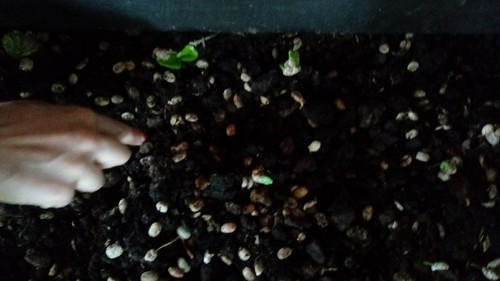
The second step is to collect as many red beans as possible into baskets. Then the baskets are brought and weighed and filtered to remove black and green beans.
Coffee Beans
There are red beans, black beans, and green beans when it come to harvesting.
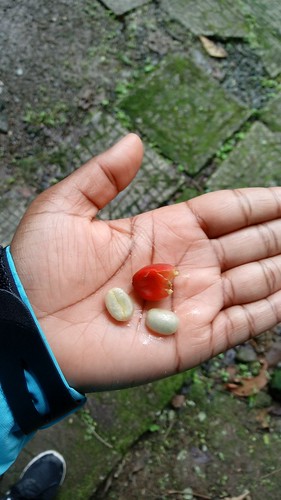
“Does anyone know which bean is the best quality?” inquired Katherine.
We took turns shouting, “Green!” “Black!” “Red!”
Black is overripe so the coffee can taste bitter, and green is not ripe enough.
The red beans are perfect for the medium roast that Mi Cafecito specializes in.
Additionally, the green beans, which are less rich in flavor, are used by the women to make crafts and shampoo for the souvenir shop. Given that each basket of coffee beans is worth about 2.00 USD, the community uses other revenues of income. One cup of regular coffee is about 50 beans -- or 25 fruits, since each fruit has two beans grown inside.
The coffee plantation is a mammoth 300 hectares (741 acres) with each hectare producing close to 3000 pounds of coffee. It takes about 12 kg (26 lbs) of coffee beans to produce 1kg of brewed coffee.

Quality Over Quantity
Currently, Costa Rica exports about 1% of the world’s coffee (almost 200 tons annually). To be able to compete with Vietnam, Brazil, and other major coffee exporters, the country focuses on quality over quantity.
Mi Cafecito has over 8 processing systems throughout the harvesting, from picking to drying to roasting. The farmers get penalized by losing 10% of their pay if they do not collect enough red beans in their basket.
“In Costa Rica, we drink second and third quality coffee and we export first quality coffee,” said Katherine.
Quality coffee is an expensive gem in Costa Rica, thus it gets exported immediately. Coffee farmers can only afford coffee roasted from black or green beans.
At the end of the tour, we followed Katherine back to the cafeteria, where she made us fresh coffee. The pungent aroma filled the whole cafeteria within seconds. She measured the coffee effortlessly, stopping between each spoonful, to remind herself who wanted it strong or weak.
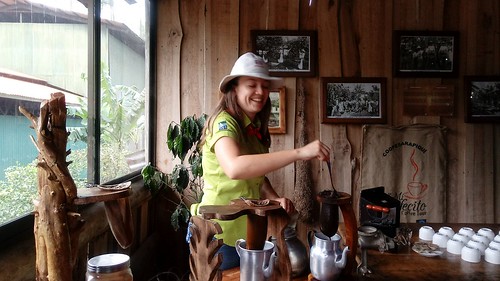
I held my breath. She was going to give us coffee to drink. And react?
Coffee is cultural in Costa Rica -- over the centuries, that precious bean has helped the country grow socially, politically, and economically.
Katherine calmly brewed the coffee over our cups.
“Do you like strong coffee?”
“Umm. I like… caffeine. Which is like the same thing, right?”
“OK. Great! Tell me when...”
“When.”
“I have not poured anything in yet.”
“Oh. Just practicing.”
A tea lover like me felt a bit out of place with coffee lovers hanging over Katherine’s every word. But as we walked during our tour: harvesting, measuring, drying, and grinding, I got more and more excited to try to finished product. The beans had gone through an extensive selection process to make it to the cup in front of me. I took my first sip and my eyes immediately widened -- the caffeine had expedited itself into my bloodstream. I took a second sip. Then another. Then another. Liquid gold.
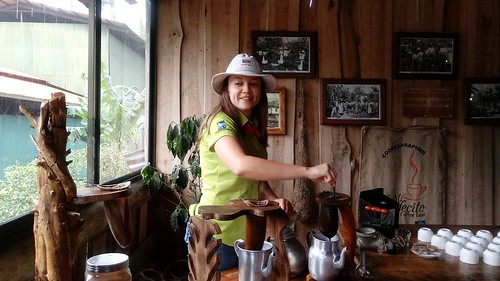
With four sips under my belt, I knew I had to take it slow unless I wanted a sharp reminder of all-nighters from my college years. I gazed around at the the group and everyone was smiling and nodding in confirmation. This was good coffee. I could not believe that I was supporting Mi Cafecito by doing something I already love to do: traveling. By simply being in Costa Rica and visiting, I was supporting this local organization, and could bring back the goodness for all to taste.
I brought back two coffee bags for my office and they loved it! Everyone prefered the Costa Rican coffee to our usual brew. My only regret was that I could not fit more in my luggage. Luckily, we can order more online. I am so glad I emerged a coffee connoisseur!
Stephane Alexandre is the Intercultural Immersion Editor for Wandering Educators. She studied abroad in Chile and graduated from Tufts University this past May. She is very passionate about creating opportunities for young people to travel and explore the world around them. She has traveled to ten countries engaging in new cultures ranging from studying abroad in Chile and leading a genocide education program in Rwanda. She sincerely believes that young people achieve greater goals when they create global connections that enable them to be active citizens in all corners of the world.
Word photo creative commons, adapted by Wandering Educators. All other photos courtesy and copyright Stephane Alexandre.
